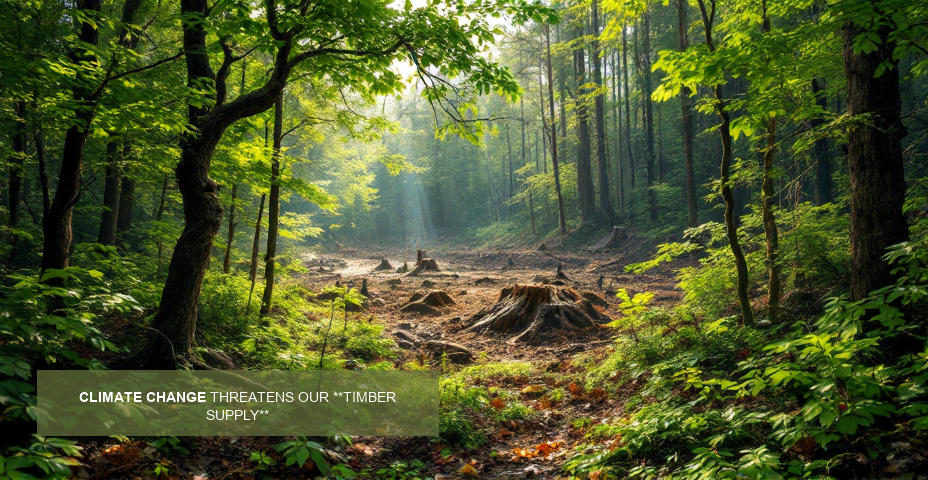A Brief Introduction to: Is climate change threatening global timber supply
The timber industry faces unprecedented challenges as our climate continues to change at an alarming rate. For woodworkers, furniture makers, and anyone involved in joinery projects, understanding how these shifts might affect wood availability and pricing becomes increasingly important. This article examines the relationship between climate change and global timber supplies, offering insights into what the future might hold for wood enthusiasts and professionals alike.
How Climate Change Affects Forests
Forests around the globe experience the effects of climate change in various ways. Rising temperatures alter growing seasons and create stress on trees that evolved in specific climate conditions. Many species struggle to adapt quickly enough to these rapid changes.
Extreme weather events such as droughts, floods, and storms damage forests with increasing frequency and severity. These events can destroy vast areas of woodland in minutes that took decades or centuries to grow. The mountain pine beetle infestation in North America serves as a stark example - warmer winters failed to kill off these pests, allowing them to devastate millions of hectares of forest.
Land Use Changes and Deforestation
As climate patterns shift, land previously suitable for forestry may become better suited for agriculture or other uses. This drives land use changes that further reduce timber availability. In tropical regions, forests are cleared for palm oil plantations or cattle ranching, while in temperate zones, urban expansion continues to encroach on woodland areas.
The Food and Agriculture Organization estimates that approximately 10 million hectares of forest are lost annually. Though some of this loss comes from direct human activity, climate change accelerates and compounds these effects through altered rainfall patterns and increased fire risk.
Impact on Wood Quality and Species Availability
Beyond simple supply questions, climate change affects the quality of timber produced. Trees growing under stress conditions often develop different physical properties. Fast growth during warm, wet periods followed by drought stress can create inconsistent density and grain patterns that reduce timber value for fine joinery work.
Certain beloved species face particular threats. English oak, long prized for furniture making, shows signs of stress across much of its range. Similarly, many tropical hardwoods face habitat loss as rainforest ecosystems struggle with changing conditions.
Adaptation and Opportunities
Despite these challenges, the timber industry adapts through several approaches. Sustainable forestry practices help maintain healthy woodlands more resilient to climate pressures. Forest managers increasingly plant mixed species forests rather than monocultures, reducing vulnerability to species-specific pests and diseases.
For woodworkers and joinery specialists, these changes may require flexibility in material choices. Woods previously considered secondary might become more prominent as traditional species become scarcer or more expensive. This presents an opportunity to explore and appreciate a broader range of timber types.
What This Means for Woodworkers
Those working with wood should prepare for several potential changes:
Price volatility seems likely as supply chains adjust to changing conditions. Certain traditional species may become premium products as their availability decreases. Meanwhile, fast-growing plantation species and alternative materials will likely become more prominent in the market.
Responsible sourcing becomes even more important, with certification systems helping identify timber from well-managed forests that contribute to climate resilience rather than degradation.
Looking Forward
The relationship between climate change and timber supply remains complex and evolving. While challenges certainly exist, human ingenuity continues to develop solutions. By staying informed about these issues, those who work with wood can make choices that support both their craft and the long-term health of global forests.
As we navigate these changes together, the woodworking community has an opportunity to champion sustainable practices that preserve our timber heritage for generations to come. The choices we make today in selecting and using timber will shape the forests of tomorrow.
Read the full article on Is climate change threatening global timber supply at hillv.com



